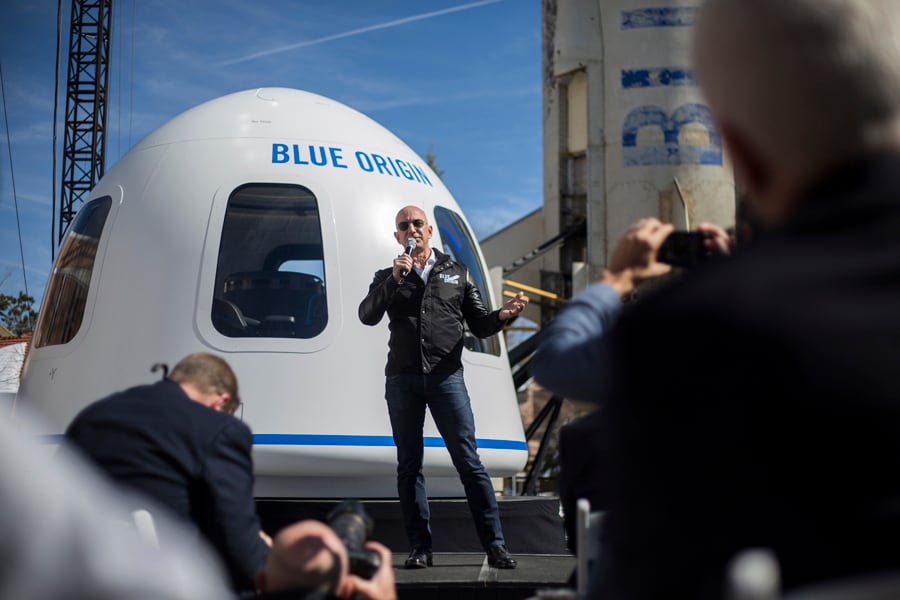
Bezos will fly aboard Blue Origin's first human trip to space
The trip may bring some renewed attention to Blue Origin, which has taken a slower approach to the development of its vehicles than the other companies, and recently lost out to Musk's company in a bid to build the next lander that would carry NASA astronauts back to the moon
 Jeff Bezos announces Blue Origin’s New Shepard space system during the 33rd Space Symposium in Colorado Springs, Colo., April 5, 2017. Bezos said on Monday, June 7, 2021, that he would be on board when his rocket company, Blue Origin, conducts its first human spaceflight next month, shortly after he steps down as chief executive of Amazon. (Nick Cote/The New York Times)
Jeff Bezos announces Blue Origin’s New Shepard space system during the 33rd Space Symposium in Colorado Springs, Colo., April 5, 2017. Bezos said on Monday, June 7, 2021, that he would be on board when his rocket company, Blue Origin, conducts its first human spaceflight next month, shortly after he steps down as chief executive of Amazon. (Nick Cote/The New York Times)
In the battle of billionaires with rocket companies, Jeff Bezos will finally beat Elon Musk.
Bezos, the founder of Amazon, said Monday that he would take a trip to space next month when Blue Origin, the rocket company he founded more than two decades ago, conducts its first human spaceflight.
“Ever since I was 5 years old, I’ve dreamed of traveling to space,” Bezos, 57, said on Instagram. He said his brother Mark would join him on the flight, allowing him to embark on “the greatest adventure, with my best friend.”
Bezos made the announcement in the middle of a busy year for human spaceflight. Blue Origin’s biggest competitors in private rocketry, SpaceX and Virgin Galactic, have both announced a number of trips to carry a variety of individuals on launches or flights high above the planet, but neither as yet plans a passenger of such a high profile.
Bezos predicted that he would be a new man after his journey to space: “It changes your relationship with this planet, with humanity,” he said. “It’s one earth. I want to go on this flight because it’s the thing I’ve wanted to do all my life.”
©2019 New York Times News Service




